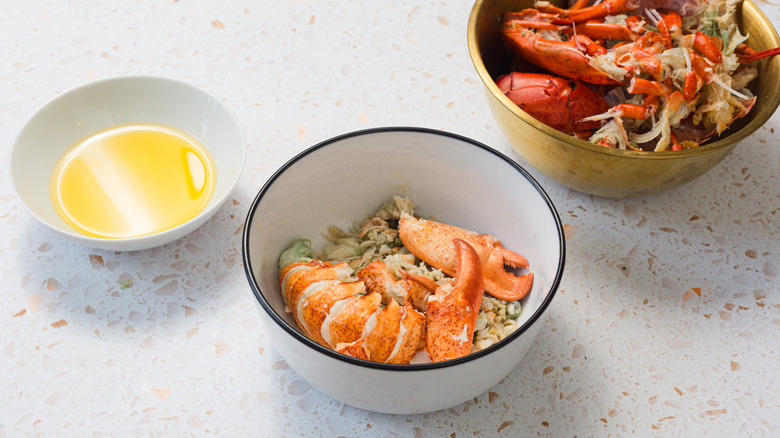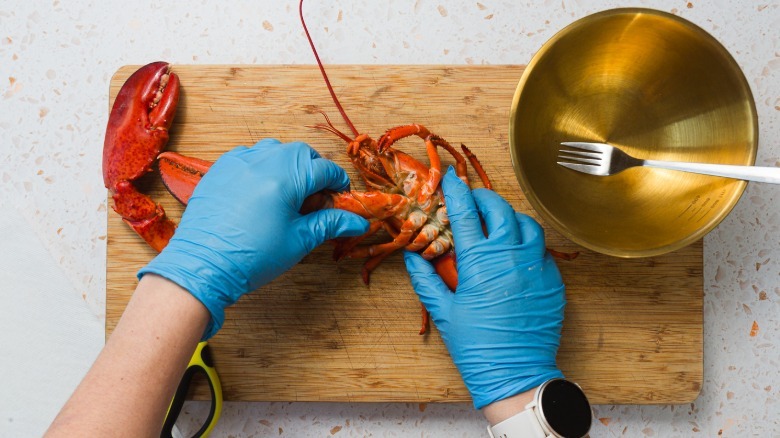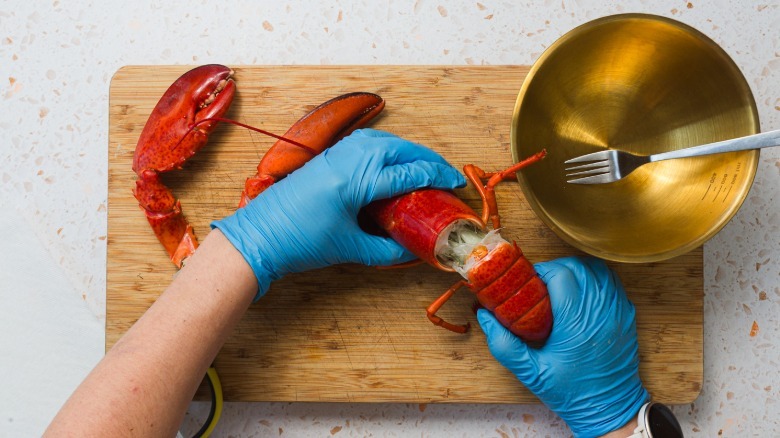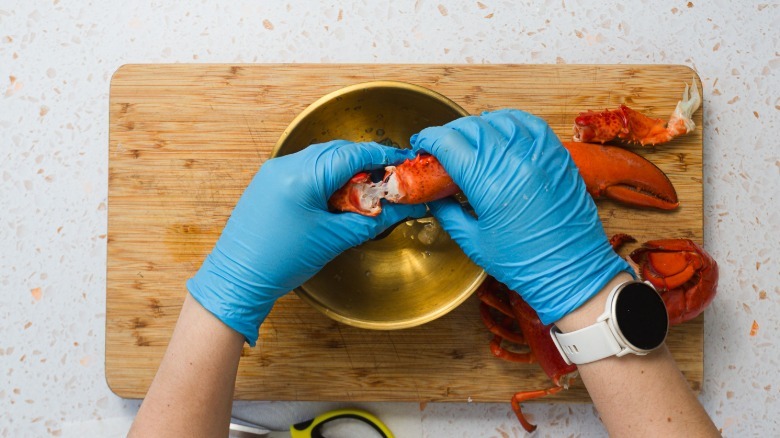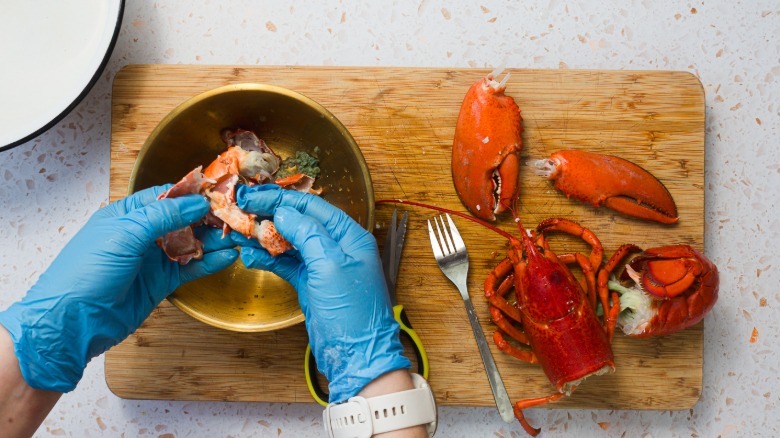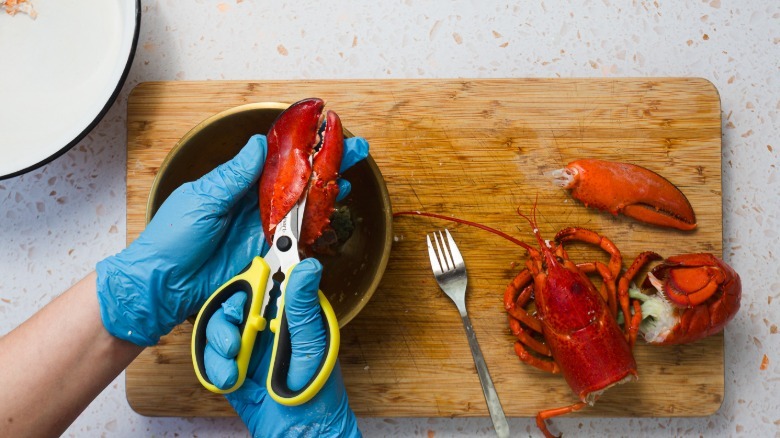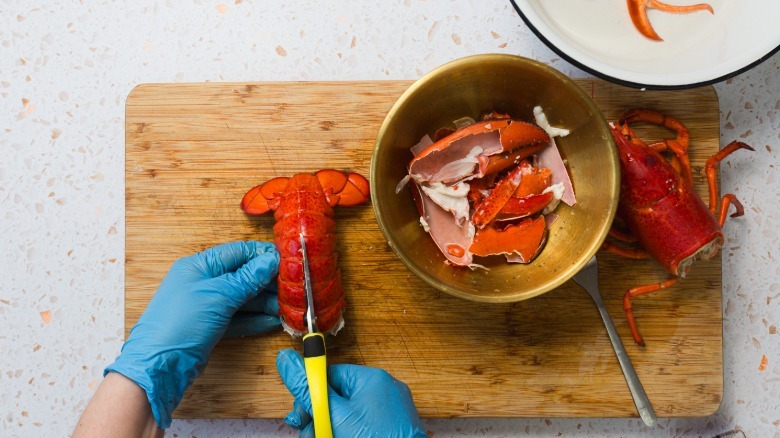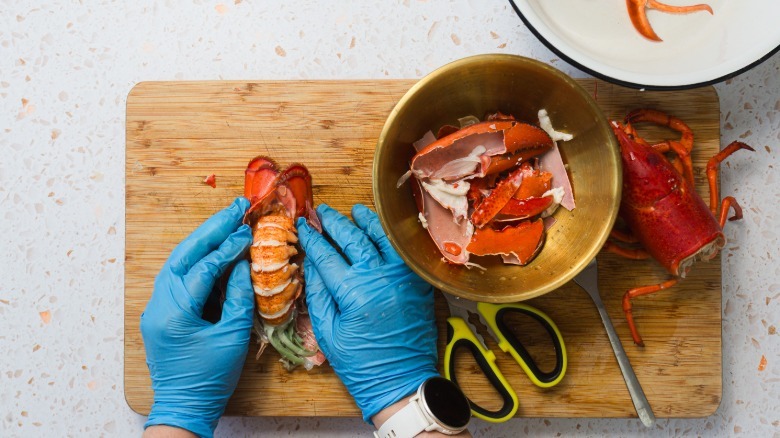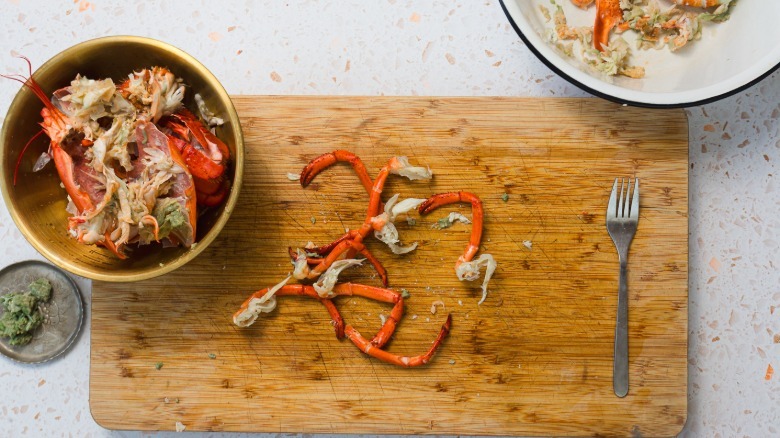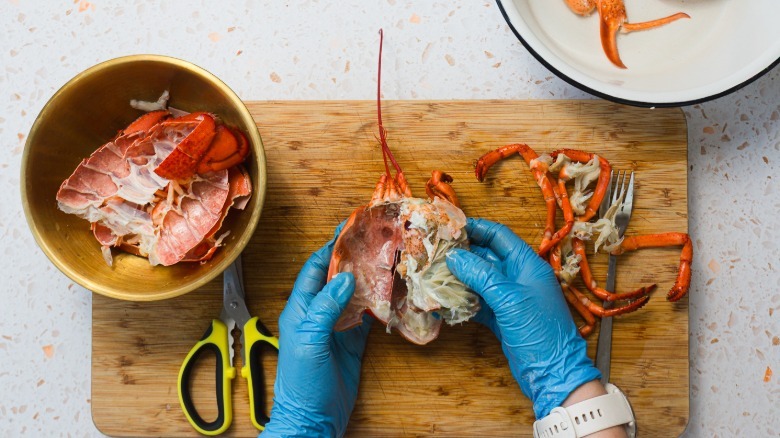How To Properly Crack And Eat A Whole Lobster
Lobster feels like the ultimate 1% food, if only because getting it to the table seems like such a daunting task. But what if we told you that getting through that tough shell is easier than you think? You may find it even harder to believe than the fact that lobster used to actually be prison food. And because we love shocking you, here's our guide to how to properly crack and eat a whole lobster.
Lobster is probably one of the most expensive dishes you can order in a restaurant, and most of that is due to the labor-intensive process of cooking, shelling, and prepping it. But if you're lucky to live in an area rich with crustaceans, then each year, when lobster season begins, you can get yourself a red beauty for a modicum of its normal price. Whether you're going to prep and grill it yourself or buy it already done for you, just make sure to look for the tell-tale signs that your lobster is fully cooked.
If you're ready to brave the lobster shelling process, we're here to tell you that it's really not that hard. All you need are some simple kitchen tools, a cooked lobster, patience, and maybe some grit. With the application of just a bit of force and a lot of tenacity, you're just half an hour away from some of the freshest lobster meat you can find.
Tools you'll need
To start with your prep process, you'll first need a cooked lobster. If cooking yourself, we suggest parboiling it first so the shell will come off easily.
The most important tool you will need is a pair of kitchen shears. You can also work with specially designed lobster crackers, but honestly, we just find those gimmicky. Other than that, you'll need a small fork or seafood pick, a large cutting board, a bowl for shells, another bowl or plate for collecting the lobster meat, and some napkins or paper towels to clean the mess and your hands.
Prep work station
Clear a flat surface with enough room for your tools and lobster.
Place a cutting board or plate on the surface.
Have a bowl ready for discarded shells.
Keep napkins or paper towels nearby for cleaning hands.
Step 1: Remove lobster claws
Hold the lobster body firmly with one hand.
Twist each claw away from the body until it separates.
Place claws on the cutting board.
Then, prepare to remove the lobster tail.
Twist the tail away from the body until it separates.
Remove the liquid and debris from the stomach area
Place the tail on the cutting board or plate. Transfer discarded shells into the shell collecting bowl.
Step 2: Remove and eat the claw and knuckles
Twist or cut the knuckles (the section connecting claws to body) away from the claws.
Separate all the joints so it's easier to work with the parts.
Crack the knuckle shells with the crackers or shears.
Remove the meat with a small fork. Eat or place the meat on the plate, keeping in mind there won't be much yield there.
Transfer the discarded shells into a collection bowl.
Use the kitchen shears to crack the claw shell gently.
Start at the thicker part of the claw. Avoid crushing the meat inside.
Cut off and remove any remaining shell pieces to expose the meat.
Use a small fork or your fingers to extract the meat. Eat, or place the meat on your plate. Transfer discarded shells into the collection bowl.
Step 3: Remove the meat from the tail and body and eat
Place the tail on the cutting board.
Use kitchen shears to cut down the middle of the shell lengthwise.
Pull apart the shell to expose the meat.
Remove the tail meat in one piece.
Check for, and remove, the dark vein along the back — this is the lobster's digestive tract.
Eat or place the meat on the plate. Transfer discarded shells into the shell collecting bowl.
Twist each leg away from the body.
Use small kitchen scissors to vertically cut along the length of the bigger joints of the legs and pull out the meat to serve. If eating, just clamp and suck on the legs to get the meat out.
Transfer the discarded shells into a shell-collecting bowl.
Break the lobster body in half.
Use a small fork or pick to remove any meat inside the body cavity. Set aside the green entrails called tomalley, which are actually the pancreas and liver of the lobster. You can eat it sometimes, and some even consider it a delicacy, but we don't recommend doing it often, as it contains some toxins like dioxins and mercury. However, don't worry about eating any parts of the lobster meat that are tinged green — those are totally safe and are just a result of the normal diet of the lobster in certain locations.
Eat or place the meat on the plate. Transfer the discarded shells into a shell-collecting bowl.
Recipe ideas
Now that you've successfully taken apart your lobster, it's time to think about how to use it. The easiest thing to do is to just heat up some clarified butter and dip your lobster meat into it. It is delicious, tender, and slightly sweet.
The other most typical use for lobster is, of course, lobster rolls. You can make classic Connecticut-style rolls, or go crazy and turn them into fries. We also love Lobster Newburg as a fancy party appetizer that is much easier to make than you think. Lobster risotto is delicious, or try it in a white wine sauce with spaghetti — both of which turn the delicate meat into a full meal.
But whatever you do with your lobster, don't make the wasteful mistake of throwing out what's in your collection bowl. The shells can be used in lobster bisque or in flavoring the bechamel for your lobster mac and cheese.
